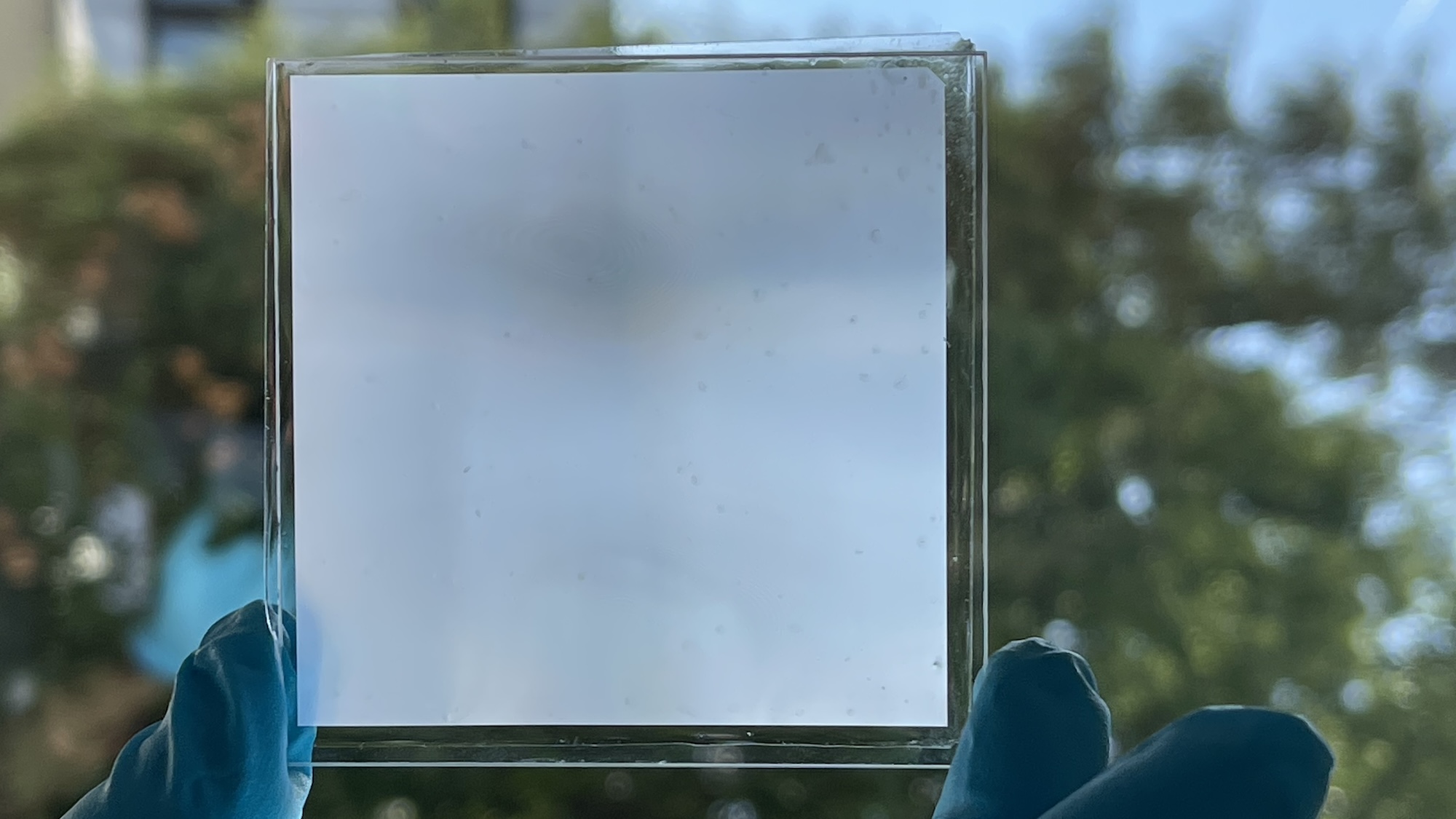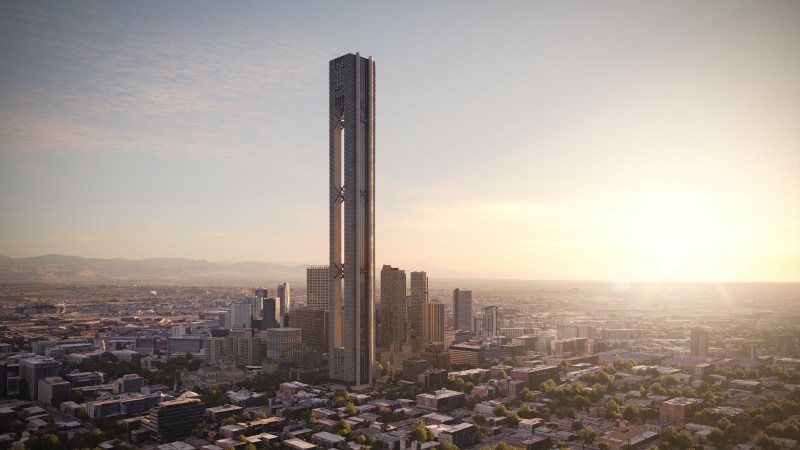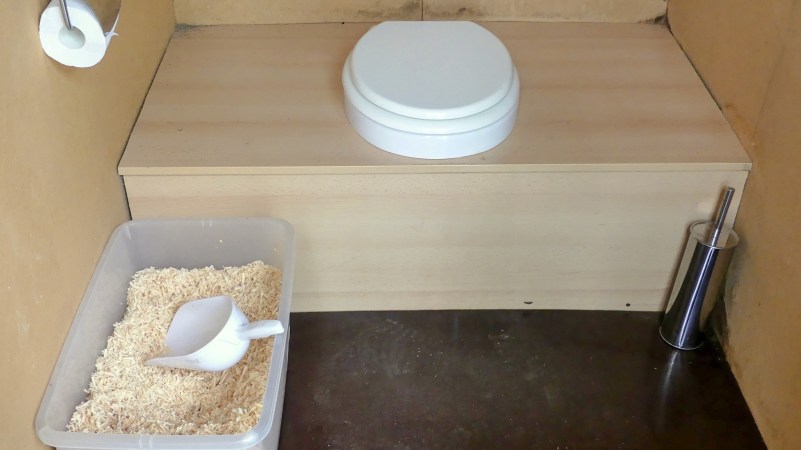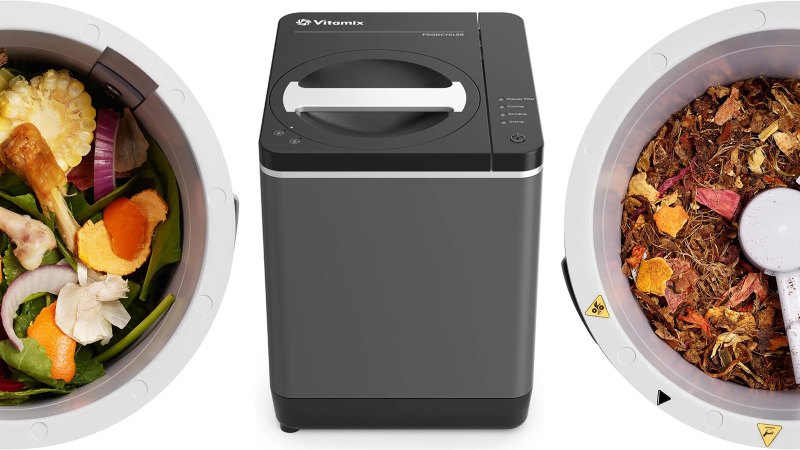
A material that’s more transparent than glass without sacrificing privacy sounds like an impossibility, but an ultrathin film designed by researchers at Germany’s Karlsruhe Institute of Technology (KIT) does just that. The new polymer-based microphotonic multifunctional metamaterial (PMMM) owes its abilities to silicone “micro-pyramids,” each one-tenth the diameter of a human hair, and is more transparent than a window. When layered atop glass, however, PMMM still obscures any objects behind it.
Glass is one of the world’s most common construction materials, but there are obvious drawbacks to using it. Allowing in ambient sunlight often raises a room’s temperature, while its transparency makes privacy difficult without additional tinting, curtains or shades. And then there are the frequent cleanings that stem from the inevitable build-ups of dirt and smudges.
[Related: Scientists make big step in developing sustainable glass.]
KIT researchers’ new material, detailed in the journal Nature Communications, manages to tackle each of those problems when laid over glass. A standard window possesses a high spectral transmittance (aka transparency) rate of around 91-percent while PMMM offers 95-percent transparency. But unlike normal glass, 73-percent of that light is immediately diffused by the thousands of silicone micro-pyramids. This means that while light is technically brighter than when it passes through a usual window, objects still look blurry like in frosted glass. The complex interplay between the small structures and incoming light creates additional benefits, too.
“A key feature is the ability to efficiently radiate heat through the Earth’s atmosphere’s long-wave infrared transmission window, releasing heat into the cold expanse of the universe,” This allows for passive radiative cooling without electricity consumption,” study co-author Bryce S. Richards explains in an accompanying statement.
During indoor testing, for example, the PMMM layer cooled ambient temperatures by as much as 6-degrees Celsius (10.8-degrees Fahrenheit). Meanwhile, the micro-pyramids’ 150-degree contact angles created a superhydrophobic surface similar to a lotus leaf. Like on the plant, any water that subsequently beads up on the PMMM also collects dust and dirt before sliding away, thus providing an effective self-cleaning mechanism.
Researchers believe their PMMM could soon be employed in a number of different settings such as more sustainable and energy-efficient architecture projects. They also think applying the metamaterial in greenhouses thanks to its greater transparency, and estimate it may increase plant yields as much as nine percent.







